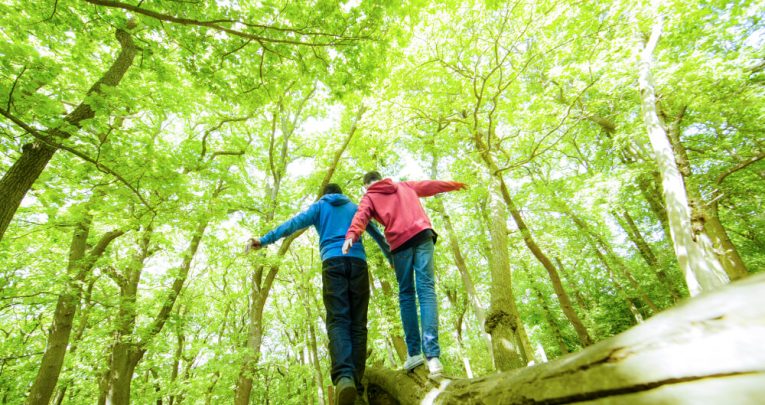Outdoor Learning – 5 Things that Can’t be Taught in the Classroom

Not only is forest school still relevant for learners after KS2, says Gordon Cairns, it can help deliver invaluable lessons that might not be accessible any other way…

Admittedly, trying to enthuse a class of teenagers about forest school learning can be a hard sell; after all, this is a group whose experience of the ‘outdoors’ tends to be limited to the space between their parents’ car door and their next destination.
However, once you’ve persuaded them that it won’t involve wearing thick red ski suits, holding hands, and singing the Teddy Bears’ Picnic as they weave through the trees, taking a class of urbanites outside can enable them to access areas of learning simply unreachable within the confines of a classroom. Here are just five examples:
1 | Tackling risk aversion
Today’s teenagers have grown up in a more protective environment than any other generation in history as parents try to safeguard their offspring from both physical and emotional risk.
When a situation arises, many won’t have had the experience of dealing with a hazardous scenario and so could freeze or make the wrong choice.
Forest schools activities like fire building and using axes encourage learners to take risks in a safe environment; rather than avoiding danger, teenagers can be taught how to assess whether a particular risk is worth taking, or should be avoided.
2 | Ecotherapy
As the social remit of education expands to tackle depression, stress and anxiety reduction, many PSE classes engage in innovative methods to aid the mental health of their senior pupils, such as yoga, for example.
Taking a class to a local park in the weeks leading up to exam season might not be a new idea – after all, the Victorians built asylums surrounded by greenery – but could actually make a long term difference.
Modern research confirms that levels of the stress hormone cortisol are lower when we are in nature, even for a short time.
The purpose doesn’t matter – whether it’s bird spotting, collecting twigs for an art project or reading Ted Hughes poems under the canopy of trees, time spent surrounded by nature can have a positive mental impact.
Furthermore, it’s far easier, and cheaper to replicate, than booking a massage or a course of aromatherapy.
3 | Health by stealth
Schools are often blamed for rising obesity levels in teenagers despite pupils’ myriad methods for getting out of PE lessons. In a forest school session, however, it is much harder to escape activity.
A session generally involves a couple of hours of constant movement, carrying heavy drums of water, sawing and collecting wood, and can only be accessed on foot; the pupils must walk if they don’t want to be alone all night in the forest.
4 | Deep reflection
Some elements of a successful forest school lesson can’t be quantified – but you can really feel when something special has occurred, altering the group dynamic and giving individuals pause for thought.
A class sit on logs around a warm, crackling fire they have built, eating toast and drinking hot chocolate they’ve made themselves. The joking, pushing and teasing stops, and a pleasant lull hangs over them as they stare into the flames.
Conversations begin, about dreams and aspirations. The creation of these types of valuable experiences simply cannot occur in the classroom (for a start, the health and safety officer would never allow the fire…)
5 | How to sleep
Research shows one of the biggest barriers to learning is a teenagers’ sleep deficit, but what can teachers do when pupils are regularly being messaged awake at 2am?
Exposing a class to natural light regularly through a forest school session helps regulate melatonin, the hormone which controls sleep.
And, as students come to realise how well rested and focused they feel the morning after they have been out in nature, they might even choose to get outside more often in their own time, too.
Gordon Cairns is an English and forest school teacher, who works in a unit for secondary pupils on the Autism Spectrum Disorder.









